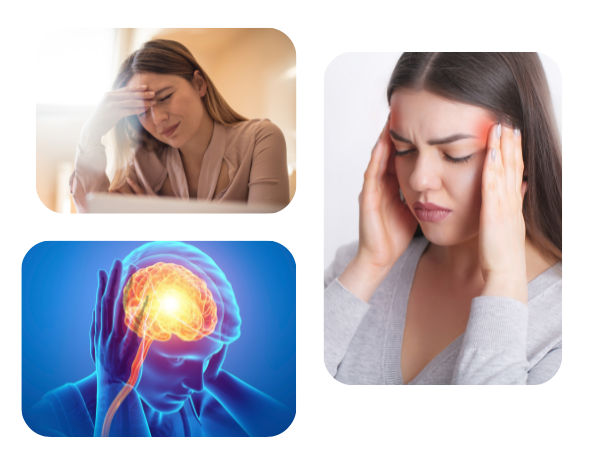Menu
- AyurVAID Pharmacy
A migraine headache is a form of vascular headache. Migraine headache is caused by vasodilatation (enlargement of blood vessels) which causes the release of chemicals from nerve fibres that coil around the large arteries of the brain. It is a debilitating condition characterized by moderate to severe headaches, and nausea. In Ayurveda, migraine is correlated with Ardhavabhedhaka, with tri dosha vitiation and involvement of half part of the head and different types of pain – pricking, cutting, stabbing, tearing, and burning. Suppression of natural urges, indulging in excessive exercise, excessive intake of dry & rough food, fasting, and exposure to fog or cold, are said to be the triggers of ardhavabhedaka. This causes vata or Vata Kapha dosha vitiation, affects the Shiras, and produces shirashoola or headache on ardhabhaga or half side of the head. Ayurveda treatment for migraine focuses on balancing the doshas and addressing the underlying causes to provide relief.


The Apollo AyurVAID approach emphasizes the importance of diagnosing and treating patients based on thorough evidence, focusing on individual characteristics and the root causes of their conditions. By tailoring Ayurveda treatment for migraines to each patient’s constitution, symptoms, and underlying factors, Apollo AyurVAID aims to provide personalized and efficient care. The treatment protocol involves techniques such as Nidana Parivarchana or avoidance of triggers and Vata & vatakaphahara chikitsa, which include a variety of therapeutic methods like Shiroabhyanga, Snehapana, Swedha, and more, in line with the holistic principles of Ayurveda medicine.


Bengaluru – Domlur Bengaluru – Aster CMI, Hebbal Bengaluru – HRBR Layout Bengaluru – Sri Shankara, Basavangudi Bengaluru – Bannerghatta Road Bengaluru – ArekereDelhi – New DelhiKochi – Kadavanthara Uttarakhand-Kalmatia, AlmoraChennai – Greams Road Chennai – Vanagaram Chennai – Kotturpuram Hyderabad – Somajiguda
Ayurveda Parasurgery Autoimmune Disorders Blood Disorders Cardiology Dermatology Endocrinology Ear-Nose Throat-Mouth Elder-Care Gastrointestinal Gynaecology Integrative Oncology Infectious-Diseases Liver-Hepato-Biliary-Care Mental Health and De-addiction Male-Reproductive-Disorders Nephrology Neurological-Disorders Orthopaedic Disorders Ophthalmology Obstetrics-Integrative Preventive-Health-Wellbeing Pulmonology Pediatric-Development-Disorder Sleep-Disorders
Any use of this site constitutes your agreement to the Terms and Conditions, Privacy Policy and Cancellation and Refund Policy
©2025 Apollo AyurVAID Hospitals. All rights reserved.
Popular Searches: DiseasesTreatmentsDoctorsHospitalsWhole person careRefer a patientInsurance